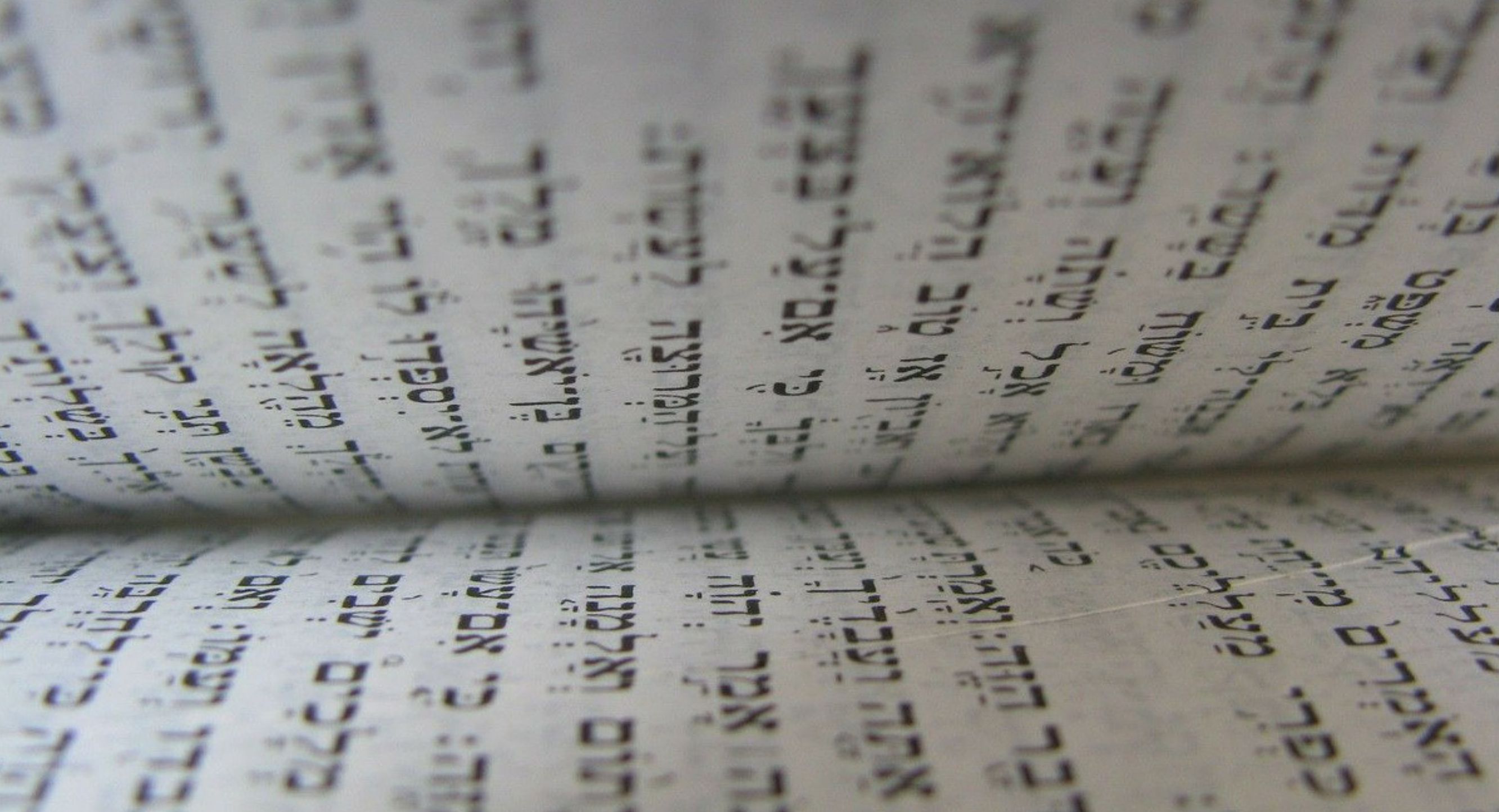"Who Is David and Who Is – the Son of Jesse?". The Interpretation of the Figure of King David in the Development of Old Testament Theology
Abstrakt
The article addresses the issue of the numerous inconsistencies and contradictions found in the David cycle in 1 Sam 14 – 1 Kings 2. Usually, exegetes tend to believe that the biography of the king, especially the section the ‘History of David’s rise to power’, shows traces of two legends of different origins, regardless of whether the figure actually existed in Israel’s history. However, after comparing the inconsistencies in the portrayal of the king, it can be concluded that the basis of the legends about David may have been a real historical figure of a certain warrior whose biography can be traced from 1 Sam 27 – a certain warrior from the Philistine city of Ziklag who conquered the heights of Hebron and may be considered the founder of the Judah statehood.
Słowa kluczowe:
King David, History of David’s rise, Philistines, Kingdom of Judah, the books of SamuelBibliografia
Amit, Y., Hidden Polemics in Biblical Narrative ( Biblical Interpretation Series 25; Leiden: Brill 2000). (Crossref)
Amzallag, N., “Who Was the Deity Worshipped at the Tent-Sanctuary of Timna?”, Mining for Ancient Copper: Essays in Memory of Beno Rothenberg (ed. E. Ben-Yosef ) ( Monograph series 37; Tel Aviv: Eisenbrauns 2018) 127–136.
Anderson, A., 2 Samuel (Word Biblical Commentary 11; Dallas, TX: Word Books 1989).
Andersson, G., Untamable Texts: Literary Studies and Narrative Theory in the Books of Samuel ( Journal for the Study of the Old Testament Supplement Series 514; New York: Clark 2009).
Avioz, M., “The Names Mephibosheth and Ishbosheth Reconsidered”, Journal of the Ancient Near Eastern Society 32/1 (2011) 11–20.
Baden, J., The Historical David: The Real Life of an Invented Hero (New York: HarperOne 2013).
Bailey, J., “The Assassination of Mephibosheth: Royal and Redactional Intrigue in the Book of Samuel”, Journal for the Study of the Old Testament 44/2 (2019) 279–289. (Crossref)
Balzaretti, C., 1–2 Samuele ( I libri biblici: Primo Testamento 8; Milano: Paoline 2020).
van Bekkum, K., “Coexistence as Guilt: Iron I Memories in Judges 1”, The Ancient Near East in the 12th–10th Centuries BCE: Culture and History (eds. G. Galil – A. Gilboa) ( Alter Orient und Altes Testament 392; Münster: Ugarit-Verlag 2012) 525–548.
Ben-Shlomo, D., “New Evidence of Iron Age II Fortifications at Tel Hebron”, The Last Century in the History of Judah: The Seventh Century BCE in Archaeological, Historical, and Biblical Perspectives (eds. F. Čapek – O. Lipschits) ( Ancient Israel and Its Literature 37; Atlanta, GA: SBL 2019) 63–87. (Crossref)
Boda, M., “Gazing through the Cloud of Incense: Davidic Dynasty and Temple Community in the Chronicler’s Perspective”, Chronicling the Chronicler: The Book of Chronicles and Early Second Temple Historiography (eds. P. Evans – T. Williams) (Winona Lake, IN: Eisenbrauns 2013) 215–245. (Crossref)
Bodner, K., David Observed: A King in the Eyes of His Court ( Hebrew Bible Monographs 5; Sheffield: Phoenix Press 2005).
Bodner, K. – Johnson, B., “David: Kaleidoscope of a King”, Characters and Characterization in the Book of Samuel (eds. K. Bodner – B. Johnson) ( Library of Hebrew Bible/Old Testament Studies 669; London: Clark 2020) 121–138. (Crossref)
Brueggemann, W., David’s Truth in Israel’s Imagination & Memory (Philadelphia, PA: Fortress 1985).
Cassuto, U., The Documentary Hypothesis and the Composition of the Pentateuch ( Jerusalem: Magnes 1961).
Chadwick, J., “Discovering Hebron: The City of the Patriarchs slowly yields Its Secrets”, Biblical Archaeology Review 31 (2005) 24–33, 70–71.
Gould, R., “Transgressive Sanctity: The Abrek in Chechen Culture”, Kritika 8/2 (2007) 271–306. (Crossref)
Demsky, A., “The Clans of Ephrath: Their Territory and History”, Tel Aviv 13/1 (1986) 46–59. (Crossref)
Dever, W., Beyond the Texts: An Archaeological Portrait of Ancient Israel and Judah (Atlanta, GA: SBL 2017). (Crossref)
Dever, W., “Solomon, Scripture, and Science: The Rise of the Judahite State in the 10th Century BCE”, Jerusalem Journal of Archaeology 1 (2021) 102–125. (Crossref)
Duke, R.K., The Persuasive Appeal of the Chronicler: A Rhetorical Analysis ( Bible and Literature Series 25; Sheffield: Almond Press 1990).
Ehrlich, C., “David and Achish: Remembrance of Things Past, Present, or Future?”, David in the Desert: Tradition and Redaction in the “History of David’s Rise” (eds. H. Bezzel – R.G. Kratz) ( Beihefte zur Zeitschrift für die alttestamentliche Wissenschaft 514; Berlin: De Gruyter 2021) 235–248. (Crossref)
Faust, A., Israel’s Ethnogenesis: Settlement, Interaction, Expansion and Resistance ( Approaches to Anthropological Archaeology; London – New York: Routledge 2014).
Finkelstein, I., “A Great United Monarchy? Archaeological and Historical Perspectives”, One God – One Cult – One Nation: Archaeological and Biblical Perspectives (eds. R.G. Kratz – H. Spieckermann) ( Beihefte zur Zeitschrift für die alttestamentliche Wissenschaft 405; Berlin: De Gruyter 2010) 3–28. (Crossref)
Finkelstein, I., “Jerusalem in the Iron Age: Archaeology and Text; Reality and Myth”, Unearthing Jerusalem: 150 Years of Archaeological Research in the Holy City (eds. K. Galor – G. Avni) (Winona Lake, IN: Eisenbrauns 2011) 189–201. (Crossref)
Finkelstein, I., “Geographical and Historical Realities behind the Earliest Layer in the David Story”, Scandinavian Journal of the Old Testament 27 (2013) 131–150. (Crossref)
Finkelstein, I., “Northern Royal Traditions in the Bible and the Ideology of a ‘United Monarchy’ Ruled from Samaria”, Stones, Tablets, and Scrolls: Periods of the Formation of the Bible (eds. P. Dubovský – F. Giuntoli) (Archaeology and Bible 3; Tübingen: Mohr Siebeck 2020) 113–126.
Finkelstein, I., The Forgotten Kingdom: The Archaeology and History of Northern Israel ( Ancient Near East Monographs 5; Atlanta, GA: SBL 2013).
Finkelstein, I., “The Rise of Jerusalem and Judah: the Missing Link”, Levant 33/1 (2001) 105–115. (Crossref)
Fröhlich, I., “Origins of Evil in Genesis and the Apocalyptic Traditions”, Apocalyptic Thinking in Early Judaism (eds. C. Wassen – S. White Crawford) ( Supplements to the Journal for the Study of Judaism 182; Leiden: Brill 2018) 141–159. (Crossref)
Gadot, Y. – Uziel, J., “The Monumentality of Iron Age Jerusalem Prior to the 8th Century BCE”, Tel Aviv 44 (2017) 123–140. (Crossref)
Galil, G., “The Formation of Judges and Samuel and the Deuteronomistic Composition”, Vetus Testamentum 71 (2021) 566–590. (Crossref)
Galling, K., “Zur Lokalisierung von Debir”, Zeitschrift des deutschen Palästina-Vereins 70 (1954) 135–141.
Garfinkel, Y., “The 10th Century BCE in Judah: Archaeology and the Biblical Tradition”, Jerusalem Journal of Archaeology 1 (2021) 126–154. (Crossref)
Gilboa, A., “The Southern Levant (Cisjordan) During the Iron Age I Period”, The Oxford Handbook of the Archaeology of the Levant (eds. M. Steiner – A. Killebrew) (Oxford: Oxford University Press 2014) 624–648.
Graham, A.C., “Hebronite Tradition behind P in Genesis”, Journal of Theological Studies 41/162 (1940) 149–152. (Crossref)
Green, B., David’s Capacity for Compassion: A Literary-Hermeneutical Study of 1–2 Samuel ( Library of Hebrew Bible/Old Testament Studies 641; London: Clark 2017).
Greenspahn, F., “From Egypt to Canaan: Heroic Narrative”, Israel’s Apostasy and Restoration: Essays in Honor of Roland K. Harrison (ed. K. Harrison) (Grand Rapids, MI: Baker Books 1988) 1–8.
Gunn, D.M., “Narrative Patterns and Oral Tradition in Judges and Samuel”, Vetus Testamentum 24/3 (1974) 286–317. (Crossref)
Gunn, M.D., The Story of King David: Genre and Interpretation ( Journal for the Study of the Old Testament Supplement Series 6; Sheffield: Sheffield Academic Press 1978)
Halpern, B., David’s Secret Demons: Messiah, Murderer, Traitor, King ( The Bible in Its World; Grand Rapids, MI: Eerdmans 2001).
Hentschel, G., “David’s Flight to the King of Gath”, David in the Desert: Tradition and Redaction in the “History of David’s Rise” (eds. H. Bezzel – R.G. Kratz) ( Beihefte zur Zeitschrift für die alttestamentliche Wissenschaft 514; Berlin: De Gruyter 2021) 225–234. (Crossref)
Hong, K., “The Deceptive Pen of Scribes: Judean Reworking of the Bethel Tradition as a Program for Assuming Israelite Identity”, Biblica 92/3 (2011) 427–441.
Japhet, S., “Was David a Judahite or an Ephraimite? Light from the Genealogies”, Let Us Go Up to Zion: Essays in Honour of H. G. M. Williamson on the Occasion of his Sixty-Fifth Birthday (eds. I. Provan – M. Boda) (Supplements to Vetus Testamentum 153; Leiden: Brill 2012) 297–306. (Crossref)
Johnson, B., “An Unapologetic Apology: The David Story as a Complex Response to Monarchy”, The Book of Samuel and Its Response to Monarchy (eds. S. Kipfer – J. Hutton) ( Beiträge zur Wissenschaft vom Alten und Neuen Testament 228; Stuttgart: Kohlhammer 2021) 225–242.
Keimer, K., “Evaluating the ‘United Monarchy’ of Israel: Unity and Identity in Text and Archaeology”, Jerusalem Journal of Archaeology 1 (2021) 68–101. (Crossref)
Kisch, J., King David: The Real Life of the Man Who Ruled Israel (New York: Ballantine Books 2000).
Klein, R., 1 Samuel (Word Biblical Commentary 10; Waco: Word Books 1983).
Knauf, E., “Bethel: The Israelite Impact on Judean Language and Literature”, Judah and Judeans in the Persian Period (eds. O. Lipschits – M. Oeming) (Winona Lake, IN: Eisenbrauns 2006) 291–349. (Crossref)
Kochavi, M., “Khirbet Rabûd = Debir”, Tel Aviv 1 (1974) 2–33. (Crossref)
Komarnytskyy, V., “Giuda per primo”: Il ruolo della tribù di Giuda nell’epoca premonarchica secondo il libro dei Giudici (Kraków: Wydawnictwo Paweł Trzopek 2024).
Kratz, R.G., Die Komposition der erzählenden Bücher des Alten Testaments: Grundwissen der Bibelkritik (Göttingen: Vandenhoeck & Ruprecht 2000).
Maier, A., “The Tell eṣ-Ṣafi/Gath Archaeological Project 1996–2010: Introduction, Overview and Synopsis of Results”, Tell eṣ-Ṣafi/Gath. I. The 1996–2005 Seasons (ed. A. Maeir) (Ägypten und Altes Testament 69; Wiesbaden: Harrassowitz 2012) 1–88.
Mason, R., Propaganda and Subversion in the Old Testament (London: SPCK 1997).
McCarter, K., “The Apology of David”, Journal of Biblical Literature 99 (1980) 489–504. (Crossref)
McKenzie, S., King David: A Biography (New York: Oxford University Press 2000). (Crossref)
McKenzie, S., “Saul in the Deuteronomistic History”, Saul in Story and Tradition (ed. C. Ehrlich) (Forschungen zum Alten Testament 47; Tübingen: Mohr Siebeck 2006) 59–70.
Michael, M., “Is Saul the Second Goliath of 1 Samuel? The Rhetoric & Polemics of the David/Goliath Story in 1 Samuel”, Scandinavian Journal of the Old Testament 34/2 (2020) 221–244. (Crossref)
Miller, R., Yahweh: Origin of a Desert God ( Forschungen zur Religion und Literatur des Alten und Neuen Testaments 284; Göttingen: Vandenhoeck & Ruprecht 2021).
Moran, W., The Amarna Letters (Baltimore, MD: Johns Hopkins University Press 1992).
Na’aman, N., “‘Hebron Was Built Seven Years before Zoan in Egypt’ (Numbers XIII 22)”, Vetus Testamentum 31/4 (1981) 488–492. (Crossref)
Na’aman, N., “Memories of Monarchical Israel in the Narratives of David’s Wars with Israel’s Neighbours”, Hebrew Bible and Ancient Israel 6 (2017) 308–328. (Crossref)
Na’aman, N., “On Gods and Scribal Traditions in the Amarna Letters”, Ugarit-Forschungen 22 (1990) 247–255.
Na’aman N., “Saul, Benjamin and the Emergence of ‘Biblical Israel’ (part 1)”, Zeitschrift für die alttestamentliche Wissenschaft 121/2 (2009) 211–224. (Crossref)
Na’aman N., “Saul, Benjamin and the Emergence of ‘Biblical Israel’ (continued, part 2)”, Zeitschrift für die alttestamentliche Wissenschaft 121/3 (2009) 335–349. (Crossref)
Nahkola, A., Double Narratives in the Old Testament: The Foundations of Method in Biblical Criticism ( Beihefte zur Zeitschrift für die alttestamentliche Wissenschaft 290; Berlin: De Gruyter 2001). (Crossref)
Niemann, H., “Expansion Policy of the Davidic Dynasty Judah from the Late 10th to the Early 6th Centuries BCE”, Jerusalem and the Coastal Plain in the Iron Age and Persian Periods (ed. F. Hagemeyer) ( Orientalische Religionen in der Antike 46; Tübingen: Mohr Siebeck 2022) 61–86.
Nigro, L., “Le necropoli di Betlemme e la storia della città nel II e I millennio a.C.”, Holy Land. Archaeology on Either Side: Archaeological Essays in Honour of Eugenio Alliata, ofm (eds. A. Coniglio – A. Ricco) ( Collectio maior 57; Milano: Edizioni Terra Santa 2020) 85–98.
Noll, K.L., The Faces of David ( Journal for the Study of the Old Testament Supplement Series 242; Sheffield: Sheffield Academic Press 1997).
Ofer, A., “Hebron”, The New Encyclopedia of Archaeological Excavations in the Holy Land (ed. E. Stern) (Jerusalem: Israel Exploration Society 1993) II, 606–609 .
Panitz-Cohen, N., “The Southern Levant (Cisjordan) during the Late Bronze Age”, The Oxford Handbook of the Archaeology of the Levant (eds. M. Steiner – A. Killebrew) (Oxford: Oxford University Press 2014) 541–560.
Pfitzmann, F., Un YHWH venant du Sud?: De la réception vétérotestamentaire des traditions méridionales et du lien entre Madian, le Néguev et l’exode (Ex-Nb; Jg 5; Ps 68; Ha 3; Dt 33) ( Orientalische Religionen in der Antike 39; Tübingen: Mohr Siebeck 2020). (Crossref)
Polak, F., “Conceptions of the Past and Sociocultural Grounding in the Books of Samuel”, History, Memory, Hebrew Scriptures: A Festschrift for Ehud Ben Zvi (eds. I.D. Wilson – D. Edelman) (Winona Lake, IN: Eisenbrauns 2015) 117–122.
Polzin, R., David and the Deuteronomist: A Literary Study of the Deuteronomic History. Part 3: 2 Samuel (Indiana Studies in Biblical Literature; Bloomington, IN: Indiana University Press 1993).
Porzig, P., “David in the Judean Desert: Beobachtungen an ausgewählten Qumrantexten”, David in the Desert: Tradition and Redaction in the “History of David’s Rise” (eds. H. Bezzel – R.G. Kratz) ( Beihefte zur Zeitschrift für die alttestamentliche Wissenschaft 514; Berlin: De Gruyter 2021) 9–33. (Crossref)
de Pury, A., “The Jacob Story and the Beginning of the Formation of the Pentateuch”, Farewell to the Yahwist?: The Composition of the Pentateuch in Recent European Interpretation (eds. T. Dozeman – K. Schmid) (Symposium Series 34; Atlanta, GA: SBL 2006) 51–72.
Rofé, A., “The Battle of David and Goliath: Folklore, Theology, Eschatology”, Judaic Perspectives on Ancient Israel (eds. J. Neusner – B. Levine – E. Frerichs) (Philadelphia, PA: Fortress 1987) 117–151.
Römer, T., The Invention of God ( Cambridge, MA – London: Harvard University Press 2015). (Crossref)
Schneider, T., “The Philistine Language: New Etymologies and the Name ‘David ’”, Ugarit-Forschungen 43 (2011) 569–580.
Seibert, E., Subversive Scribes and the Solomonic Narrative: A Rereading of 1 Kings 1–11 ( Journal for the Study of the Old Testament Supplement Series 436; London: Clark 2006).
Sergi, O., “Saul, David, and the Formation of the Israelite Monarchy: Revisiting the Historical and Literary Context of 1 Samuel 9–2 Samuel 5”, Saul, Benjamin, and the Emergence of Monarchy in Israel: Biblical and Archaeological Perspectives (eds. J. Krause – O. Sergi – K. Weingart) ( Ancient Israel and Its Literature 40; Atlanta, GA: SBL 2020) 57–91. (Crossref)
Sergi, O., “The Emergence of Judah as a Political Entity between Jerusalem and Benjamin”, Zeitschrift des Deutschen Palästina-Vereins 133/1 (2017) 1–23.
van Seters, J., In Search of History: Historiography in the Ancient World and the Origins of Biblical History (New Haven, CT: Yale University Press 1983).
van Seters, J., The Biblical Saga of King David (Winona Lake, IN: Eisenbrauns 2009). (Crossref)
van Seters, J., “The Conquest of Sihon’s Kingdom: A Literary Examination”, Journal of Biblical Literature 91/2 (1972) 182–197. (Crossref)
Stuckenbruck, L., “The Origins of Evil in Jewish Apocalyptic Tradition: The Interpretation of Genesis 6,1–4 in the Second and Third Centuries B.C.E.”, The Fall of the Angels (eds. C. Auffarth – L. Stuckenbruc) (Themes in Biblical Narrative 6; Leiden: Brill 2004) 87–118. (Crossref)
Tebes, J.M., “The Southern Home of Yahweh and Pre-Priestly Patriarchal/Exodus Traditions from a Southern Perspective”, Biblica 99/2 (2018) 166–188.
Tobolowsky, A., “Othniel, David, Solomon: Additional Evidence of the Late Development of Normative Tribal Concepts in the South”, Zeitschrift für die alttestamentliche Wissenschaft 131/2 (2019) 207–219. (Crossref)
Tsumura, D.T., The Second Book of Samuel (New International Commentary on the Old Testament; Grand Rapids, MI: Eerdmans 2019).
de Vaux, R., The Bible and the Ancient Near East (Garden City, NY: Doubleday 1971) .
Veijola, T., Die ewige Dynastie: David und die Entstehung seiner Dynastie nach der deuteronomistischen Darstellung (Suomalaisen Tiedeakatemian Toimituksia/Annales Academiae Scientiarum Fennicae: Sarja-Ser. B 193; Helsinki: Suomalainen Tiedakatemia 1975).
Vuk, T., Bibbia tra orientalistica e storiografia: una introduzione ( Analecta 91; Milano : Edizioni Terra Santa 2021).
Wellhausen, J., Prolegomena to the History of Israel: With a Reprint of the Article ‘Israel’ from the “Encyclopaedia Britannica” (Edinburgh: Black 1885).
Whybray, R., The Making of the Pentateuch: A Methodological Study ( Journal for the Study of the Old Testament Supplement Series 53; Sheffield: Sheffield Academic Press 1987).
Wright, J., David, King of Israel, and Caleb in Biblical Memory (New York: Cambridge University Press 2014). (Crossref)
Yadin, Y., “Military and Archeological Aspects of the Conquest of Canaan in the Book of Joshua”, Jewish Bible Quarterly 32/1 (2004) 7–15.
Zorn, J., “Reconsidering Goliath: An Iron Age I Philistine Chariot Warrior”, Bulletin of the American Schools of Oriental Research 360 (2010) 1–22. (Crossref)
Licencja

Utwór dostępny jest na licencji Creative Commons Uznanie autorstwa 4.0 Międzynarodowe.
- Zgodnie z ustawą o prawie autorskim i prawach pokrewnych z dnia 4 lutego 1994 r., Autor publikacji udziela Wydawcy czasopisma „The Biblical Annals” niewyłącznej i nieodpłatnej licencji na korzystanie z składanego do publikacji Utworu przez czas nieokreślony na nieograniczonym terytorium na następujących polach eksploatacji:
a) w zakresie utrwalenia Utworu, zwielokrotnienia Utworu dowolną techniką (w tym m.in. drukiem oraz w formie zapisu elektronicznego) na wszelkich znanych nośnikach (w tym m.in. informatycznych, elektronicznych i poligraficznych) oraz we wszelkich systemach informatycznych (szczególnie typu Internet);
b) w zakresie wprowadzenia Utworu do pamięci komputera, rozpowszechniania Utworu i egzemplarzy zwielokrotnienia Utworu, wprowadzenia do obrotu Utworu i egzemplarzy zwielokrotnienia Utworu;
c) w zakresie publicznego wykonania, odtwarzania, wystawiania i wyświetlania Utworu, użyczaniu, najmu i dzierżawy Utworu oraz egzemplarzy zwielokrotnienia Utworu;
d) w zakresie udostępniania, wprowadzanie do obrotu i rozpowszechniania Utworu i egzemplarzy zwielokrotnienia Utworu za pośrednictwem sieci informatycznych, w szczególności typu Internet, w tym promocji lub reklamy Utworu, czasopisma lub Wydawcy. - Ponadto, Autor nieodpłatnie zezwala Wydawcy na korzystanie i rozporządzanie opracowaniami Utworów.
- Wydawca może udzielać sublicencji.
- Osoby trzecie z Utworów oraz z innych materiałów zawierających lub powstałych w oparciu o Utwory mogą korzystać zgodnie ze wzorcem licencji Creative Commons Uznanie autorstwa 4.0 (znanej również jako CC-BY).







